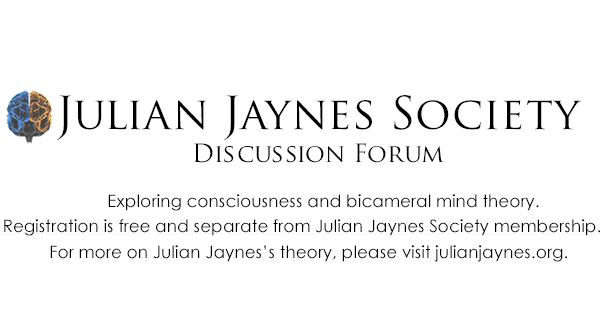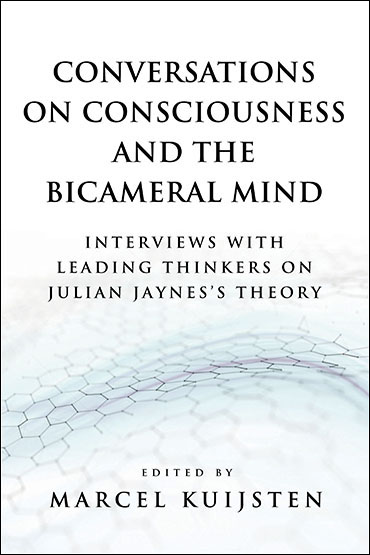How the Family Gave Birth to Religion: Kinship, Demographic Scale, and Bicameral Mentality
In the 1967 movie "Our Mother's House" seven children decide not to tell anyone that their bed-ridden mother died, afraid of what might happen to them if they do. They bury their mother in their backyard, set up a shrine and "tabernacle" and meet for "mother time" during which a sibling claims that she can "speak" to and for their mother. The behavior of the children reflects the strength of familial bonds, the apprehensive search for guidance from a deceased parental figure, and acts of communication that are at once unsettling but comforting. Belongingness, encounters with another world, and answers from a trusting and authoritative source — what we have are the building blocks of religion.
Much of human history can be understood as how kinship and nonkinship systems have interacted with each other. This essay, written from a Jaynesian perspective, is an intellectual exercise that speculates on how major changes in psyche were related to demographic expansion. Let’s start by stripping down psychosociological existence to “complexes” or compounded elements. These elements, for the sake of argument, are idealized concepts introduced as a necessary heuristic in order to highlight significant changes. Over millennia these complexes have built upon one another and shaped sociopolitical development, inter-evolving together.
First, at the level of the individual psyche we have the bicameral pilotexecutor complex; the pilot is associated with right-hemispheric language regions (now mostly inactive), while the executor concerns left-hemispheric language regions. Sometime before the neolithic the pilot began to issue hallucinatory commands, probably in the voice of parents or clan leaders (though it is possible that the voice “heard” was not attributable to anyone, i.e., a sort of anonymous speech functioning as looping auto-commands). The executor carried the instructions out. Jaynes contends that the development of hallucinations for self-direction was a consequence of the evolution of language. The agricultural revolution triggered massive developments in subsistence patterns that saw the pilotexecutor relationship acquire proto-religious meanings as a way to ideologize and justify increasingly complicated social relations. In other words the pilot articulated instructions of divinized ancestors and chieftains.
By the fourth millennium BCE emerging urbanization and early states complexified sociopolitical relations even more, leading to the dual psychology of divine power (pilot) and mortal follower (executor). But this supervisory god-and-subordinate human arrangement became obsolete. In the cauldron of civilizational chaos and collapse a new type of pilotexecutor complex was culturally cultivated, i.e., by about the first millennium BCE the pilot became an “I” and the executor a “me”; both are constituents of a unitary self.
The second element is the familyindividual complex. Before ancestors and divinities appeared during the neolithic, people hallucinated the voices and visions of their parents. Eventually, as social groupings increased in size, visions were attributed to clan leaders. The first stirrings of proto-religiosity were within the family. Ancestor worship is the oldest, most elemental, and widespread form of spirituality for a reason. In the same way individuals contain a pilotexecutor complex, larger governing structures, such as polities, would nest within themselves kinship units headed by an authoritative parent. In other words, the pilotexecutor complex was replicated at the familial level (parents governing and raising children). Such a hierarchy-within-hierarchy structure stabilized sociopolitical edifices by interweaving different levels of control.
The third element is the kinshipextrakinship complex. “Extrakinship” may be conceptualized at the level of bands (25 to 50), tribes (100s to 1000s), chiefdoms (1000s), early states (from 10,000s to 100,000s), or states (millions). Economically, generalized reciprocity characterized the smaller units, while redistribution and market exchange operated in the larger polities. Subsistence strategies (foraging, horticulture, pastoralism, agriculture, industrialism) shape kinship dynamics, which in turn configure psychosocial relations.
Obvious but crucial differences divide kinship from extrakinship systems: The former are primary socializing units, emotionally close-knit, while the latter provide secondary socializing experiences (in modern times within schools) and their relations can range from friends, acquaintances, to suspicious strangers. But what both types of systems share — and this concerns a key ingredient of human sociality — is authorization. Indeed, authorization is the theoretical thread that ties together much of this essay’s rumination, grounded as it is the neurology of bipartite mentality proposed by Jaynes.
The last element is the kinshippolity complex. This is really just a more specific case of the kinshipextrakinship complex (here “polity” implies state structures). The relation between families and governing systems is complex. In the historical record we find instances of balanced cooperation (a kinship unit is subsumed within larger governing structures). Sometimes kin networks oppose the authorities and vice versa (initially revolutionaries are suspicious of family loyalties, as are religious organizations; but eventually those attempting to control others come to view familial traditions as stabilizing). Especially in well-developed states officialdom controls and configures kinship structures through tax policies, welfare policies, definitions of marriage, etc.
Summary: The story of humankind has followed a basic trajectory: The psychoneurological complex of governing pilot‒governed executor stabilized kinship networks, then familial units undergirded extra-familial groupings. Finally, the latter scaled up to larger demographic systems such as early states, kingdoms, empires, modern states, and supersized organizations that span the globe.
How the Family Gave Birth to Religion
Posts by anthropologist, mental health counselor, and author Brian J. McVeigh on Julian Jaynes's theory and related topics.
Return to “Brian J. McVeigh's Random Thoughts”
Jump to
- JJS Forum
- ↳ General Discussion
- ↳ News Items Related to Jaynes's Theory
- ↳ Book Discussion: The Origin of Consciousness and Julian Jaynes Society Publications
- ↳ Myths, Misconceptions, and Fact Checks About Julian Jaynes's Theory
- ↳ Brian J. McVeigh's Random Thoughts
- ↳ Julian Jaynes
- ↳ Conferences, Events, and Local Discussion Groups
- ↳ Lecture Discussion
- ↳ Interview and Q&A Discussion
- ↳ 1.0. Hypothesis One: Consciousness Based On Language
- ↳ 1.01. Hypothesis One: Consciousness Based On Language | Subtopic: Consciousness & Dreams
- ↳ 1.02. Hypothesis One: Consciousness Based On Language | Subtopic: Consciousness in Children
- ↳ 1.03. Hypothesis One: Consciousness Based On Language | Subtopic: Consciousness and AI
- ↳ 2.0. Hypothesis Two: The Bicameral Mind
- ↳ 2.1. Hypothesis Two: The Bicameral Mind | Subtopic: Auditory Hallucinations in Normal Adults
- ↳ 2.2. Hypothesis Two: The Bicameral Mind | Subtopic: Hallucinations & Imaginary Companions in Children
- ↳ 2.3. Hypothesis Two: The Bicameral Mind | Subtopic: Hypnosis, Possession & Altered States of Consciousness
- ↳ 2.4. Hypothesis Two: The Bicameral Mind | Subtopic: Religion & the Bicameral Mind
- ↳ 2.5. Hypothesis Two: The Bicameral Mind | Subtopic: Schizophrenia
- ↳ 2.6. Hypothesis Two: The Bicameral Mind | Subtopic: The Mentality of Pre-Literate & Pre-Modern Peoples
- ↳ 3.0. Hypothesis Three: Dating the Development of Consciousness
- ↳ 4.0. Hypothesis Four: Jaynes's Neurological Model for the Bicameral Mind
- ↳ The Bicameral Mind in Fiction, Film & Popular Culture
- ↳ Information for Students


